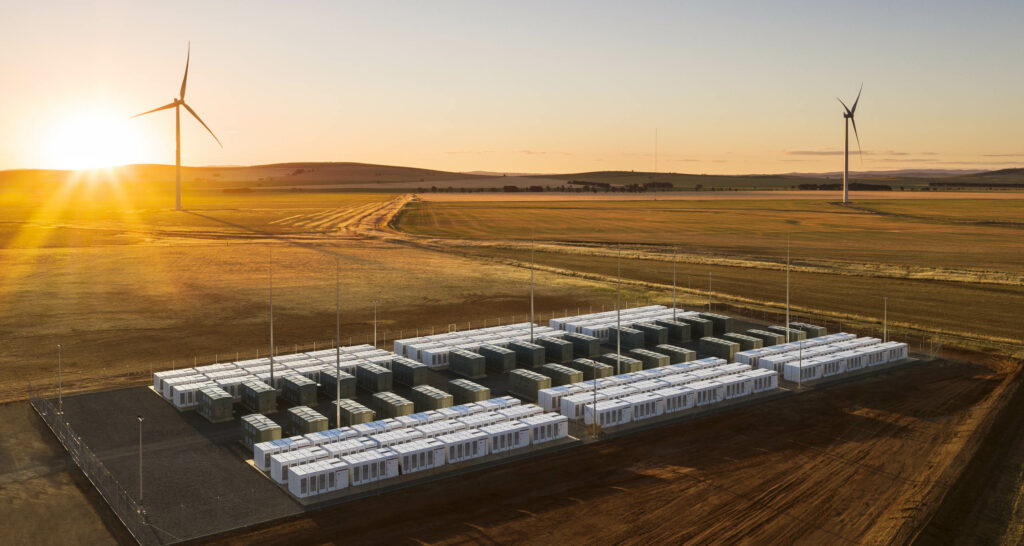Storing renewables
What kind of energy storage do we need to fight climate change with renewables?
Energy — Global

This article was first published in Climate 2020, published by Witan Media on behalf of UNA-UK.
To allow solar and wind energy to meet a large share of the demand for electricity, we need augmenting technologies that can help match the fluctuating supply to the demand for electricity and other energy services.
One such important augmenting technology is energy storage. A key focus of engineers, companies and policymakers interested in mitigating climate change is to develop ultra-cheap storage. Current technologies and batteries can get us part of the way. But our models tell us that to lean heavily on renewable energy, we will need much cheaper energy storage that can hold large quantities of energy over long periods of time. We shouldn’t put all of our eggs in one basket, so it is a good idea to pursue a diversity of technological approaches.
At the same time, in the real world where we always have limited time and financial resources, and where climate change risks are continuing to grow rapidly and threatening human and planetary wellbeing, an all-of-the-above strategy is not workable. Our technology development portfolios should be balanced between diversifying across many options and concentrating on promising ones to accelerate improvement.
Models can help us find the right strategy by estimating technology performance targets. Recently we developed a new model with this goal in mind. We investigated current and future hypothetical storage technologies and their ability to help renewable energy reliably meet demand. We learned several important lessons for the development of batteries and other energy storage technologies. We also learned about the desirable features of technologies other than energy storage that can play a ‘storage-like’ role, including demand-side management to shift electricity demand in time.
Estimating targets for energy storage
Battery technologies are improving, but how much is enough? What storage technology features would enable solar and wind energy to meet electricity demand at costs that compete with coal, natural gas and nuclear energy?
We addressed these questions in our study by examining solar and wind energy resource fluctuations in four locations (Texas, Iowa, Massachusetts and Arizona) over 20 years. We optimised renewable energy and storage installations to reliably meet electricity demand profiles while minimising electricity costs. We then estimated storage cost targets that would allow renewable resources to compete with conventional technologies.
This approach was new. Where other studies have assessed current technologies against the need for storage, sometimes allowing for incremental improvement, here we instead modelled an extremely wide range of current and future hypothetical technologies. This allowed us to develop a picture of what the target solution could look like, and in this way inform technology innovation efforts.
We found that when relying fully on renewables through optimal combinations of wind and solar electricity and storage in each region:
- Energy storage technologies with an energy capacity cost (the cost of storing quantities of energy) below $20/kWh could enable cost-competitive power in some locations. Reducing energy capacity costs was found to be more important than reducing storage power capacity costs (the cost per unit power of converting the stored energy to electricity).
- Reaching this target would require a roughly 90 per cent decline in the costs of today’s battery technologies, such as lithium-ion battery technologies.
- The $20/kWh target is closer to estimated costs of pumped hydro storage. But hydro technology is more limited in terms of where it can be installed than batteries, since current designs require the right land features to pump water uphill and hold it in a sizable reservoir.
- Some new battery technologies have been proposed, including flow batteries, to reach these targets, but they are still in development. ‘Second-life’ batteries might offer another piece of the puzzle, if they can be successfully collected in large quantities and repurposed as grid-scale storage. However, further research is needed to develop and assess the potential of these options.
In contrast, when relying on renewables and storage but also other supplemental technologies in a ‘renewables-storage-plus’ scenario we found that:
- Meeting electricity demand with supplemental energy sources other than solar and wind energy during just 5 per cent of hours over 20 years can halve electricity costs, and raise the energy storage capacity cost target to $150/kWh.
- The results are explained by a small number of large resource shortage events that occur only a handful of times over 20 years. These require a reliable, renewables-only system to have significantly greater storage capacity than this system, which uses something else for a small amount of time.
- These supplemental sources might include low-carbon fuels such as hydrogen produced from the large amounts of excess solar and wind electricity seen in our modelled, cost-minimised scenarios. In this case, the low-carbon fuels could possibly also be used to provide energy services in other sectors such as industry and transportation.
- Shifting demand in time with demand-side management technologies is another option. But this requires innovation to be able to provide a large demand response all at once and extending across several days or a week. More research is needed to understand this potential.
- Supplemental electricity generation sources such as nuclear energy or electricity from natural gas plants with carbon capture and storage are another option. However, any infrastructure used for a small amount of time will usually be more costly, and we should work to better understand those costs.
- Yet another approach is to expand transmission infrastructure to mitigate the fluctuations in solar and wind energy. But the infrastructure would need to extend over large enough distances to balance out the large fluctuations seen.
Following this renewables-storage-plus scenario would have very different implications for the energy storage required. Battery costs would not need to fall as much but other developments would still be needed.
These results do not argue for a particular set of technologies or supply mix, but instead reveal features of potential solutions for policies to target. It is too early to pick winners. But the cost targets and the two scenarios (renewables-storage and renewables-storage-plus) can guide efforts by engineers and policymakers.
They can help battery developers select suitably low-cost materials and designs, and can inform the development of demand-side management technologies and low-carbon fuels.
Actions needed
The two scenarios described here for using renewables to achieve dramatic decarbonisation – renewables-storage and renewables-storage-plus – serve as bounds for a set of scenarios that fall in between the two. In one (renewables-storage) we would achieve ultra-low-cost energy storage.
In the other (renewables-storage-plus) we would find new ways to manage demand and produce low-carbon fuels, and integrate other low-carbon supplemental energy generation, even if this infrastructure is used to meet only a small portion of electricity demand. Policymakers and technology developers should be working towards both strategies.
We should focus policies and technology development efforts on ultra-cheap and scalable energy storage, trading off low-energy capacity cost for higher-power capacity cost if needed. Creativity-driven research is important here, but so is having a numerical target to guide the development of storage technologies for which there are so many different options. These include storage of different forms of energy (chemical, mechanical, gravitational, nuclear) and different materials and device designs for implementation.
Alongside these efforts, technology development should focus on finding ways to produce, store and use low-carbon fuels from excess solar and wind energy. New kinds of demand-side management should also be developed. We should consider energy services beyond electricity, such as transportation and heating, when developing these technologies. Low-carbon fuels could potentially be used for transportation and industrial energy services as well as for electricity.
Demand-side management services could perhaps be provided by some industries and could be included in these industries’ decarbonisation plans. For example, manufacturers might design plants to ramp up during periods of excess renewable energy and shut down for several days during renewable energy resource shortages.
We can take inspiration from past policy successes in driving drastic improvements in beneficial technologies. Policy instruments such as environmental pricing and development funding for technology have led to impressive low-carbon technological innovation.
Perhaps the most notable example is that of the evolution of solar energy technology, where the costs of solar (photovoltaic) panels dropped by 99 per cent over four decades, stimulated by government policies around the world that funded research and jump-started technological development in private firms.
This example is one that we should be working hard to replicate for energy storage and other ‘storage-like’ technologies.







